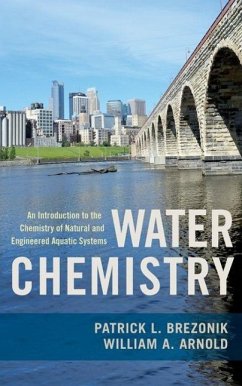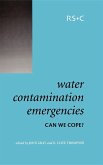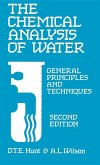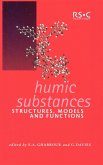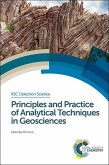Patrick Brezonik, William A. Arnold
Water Chemistry
An Introduction to the Chemistry of Natural and Engineered Aquatic Systems
Schade – dieser Artikel ist leider ausverkauft. Sobald wir wissen, ob und wann der Artikel wieder verfügbar ist, informieren wir Sie an dieser Stelle.
Patrick Brezonik, William A. Arnold
Water Chemistry
An Introduction to the Chemistry of Natural and Engineered Aquatic Systems
- Gebundenes Buch
- Merkliste
- Auf die Merkliste
- Bewerten Bewerten
- Teilen
- Produkt teilen
- Produkterinnerung
- Produkterinnerung
This book provides students with the tools necessary to understand the processes that control the chemical species present in waters of both natural and engineered systems.
Andere Kunden interessierten sich auch für
![Water Contamination Emergencies Water Contamination Emergencies]() ThompsonWater Contamination Emergencies132,99 €
ThompsonWater Contamination Emergencies132,99 €![Chemical Analysis of Water Chemical Analysis of Water]() D T E HuntChemical Analysis of Water93,99 €
D T E HuntChemical Analysis of Water93,99 €![Humic Substances Humic Substances]() GhabbourHumic Substances127,99 €
GhabbourHumic Substances127,99 €![An Introduction to Our Dynamic Planet An Introduction to Our Dynamic Planet]() Nick RogersAn Introduction to Our Dynamic Planet227,99 €
Nick RogersAn Introduction to Our Dynamic Planet227,99 €![Quantitative Analysis for Mining Engineers Quantitative Analysis for Mining Engineers]() Edmund Howd MillerQuantitative Analysis for Mining Engineers31,99 €
Edmund Howd MillerQuantitative Analysis for Mining Engineers31,99 €![Analytical Techniques for Trace Elements in Geochemical Exploration Analytical Techniques for Trace Elements in Geochemical Exploration]() Raghaw SaranAnalytical Techniques for Trace Elements in Geochemical Exploration224,99 €
Raghaw SaranAnalytical Techniques for Trace Elements in Geochemical Exploration224,99 €![Principles and Practice of Analytical Techniques in Geosciences Principles and Practice of Analytical Techniques in Geosciences]() Principles and Practice of Analytical Techniques in Geosciences229,99 €
Principles and Practice of Analytical Techniques in Geosciences229,99 €-
-
-
This book provides students with the tools necessary to understand the processes that control the chemical species present in waters of both natural and engineered systems.
Produktdetails
- Produktdetails
- Verlag: Oxford University Press
- Seitenzahl: 808
- Erscheinungstermin: 22. März 2011
- Englisch
- Abmessung: 241mm x 169mm x 43mm
- Gewicht: 1271g
- ISBN-13: 9780199730728
- ISBN-10: 0199730725
- Artikelnr.: 32688227
- Herstellerkennzeichnung
- Libri GmbH
- Europaallee 1
- 36244 Bad Hersfeld
- gpsr@libri.de
- Verlag: Oxford University Press
- Seitenzahl: 808
- Erscheinungstermin: 22. März 2011
- Englisch
- Abmessung: 241mm x 169mm x 43mm
- Gewicht: 1271g
- ISBN-13: 9780199730728
- ISBN-10: 0199730725
- Artikelnr.: 32688227
- Herstellerkennzeichnung
- Libri GmbH
- Europaallee 1
- 36244 Bad Hersfeld
- gpsr@libri.de
William A. Arnold is Associate Professor in the Department of Civil Engineering at the University of Minnesota. His research interests are in the areas of transformation, transport, and remediation of anthropogenic chemicals in the environment, including surface-mediated oxidation/reduction reaction, photochemistry, and partitioning. Patrick L. Brezonik is Professor Emeritus of Civil Engineering at the University of Minnesota. His research interests are focused on natural aquatic systems, including nutrient cycling and chemistry, metal complexation by natural organic matter, and applications of remote sensing to aquatic systems.
* Part I. Prologue
* 1: Introductory matters
* 2: Inorganic chemical composition of natural waters: elements of
aqueous geochemistry
* Part II. Theory, Fundamentals and Important Tools
* 3: The thermodynamic basis for equilibrium chemistry
* 4: Activity-concentration relationships
* 5: Chemical kinetics
* 6: Fundamentals of organic chemistry for environmental systems
* 7: Solving ionic equilibria problems
* Part III. Inorganic Chemical Equilibria and Kinetics
* 8: Acid-base systems in natural waters
* 9: Complexation reactions and metal ion speciation
* 10: Solubility: reactions of solid phases with water
* 11: Redox equilibria and kinetics
* Part IV. Chemistry of Natural Waters and Engineered Systems
* 12: Dissolved oxygen
* 13: Chemistry of chlorine and other disinfectants
* 14: Surface chemistry and sorption processes
* 15: Aqueous geochemistry II: minor metals (Al, Fe, Mn), silica,
minerals and weathering
* 16: Nutrient cycles and chemistry: nitrogen and phosphorus
* 17: Fundamentals of photochemistry and some applications in aquatic
systems
* 18: Natural organic matter and aquatic humic substances
* 19: Chemical behavior of organic pollutants
* 1: Introductory matters
* 2: Inorganic chemical composition of natural waters: elements of
aqueous geochemistry
* Part II. Theory, Fundamentals and Important Tools
* 3: The thermodynamic basis for equilibrium chemistry
* 4: Activity-concentration relationships
* 5: Chemical kinetics
* 6: Fundamentals of organic chemistry for environmental systems
* 7: Solving ionic equilibria problems
* Part III. Inorganic Chemical Equilibria and Kinetics
* 8: Acid-base systems in natural waters
* 9: Complexation reactions and metal ion speciation
* 10: Solubility: reactions of solid phases with water
* 11: Redox equilibria and kinetics
* Part IV. Chemistry of Natural Waters and Engineered Systems
* 12: Dissolved oxygen
* 13: Chemistry of chlorine and other disinfectants
* 14: Surface chemistry and sorption processes
* 15: Aqueous geochemistry II: minor metals (Al, Fe, Mn), silica,
minerals and weathering
* 16: Nutrient cycles and chemistry: nitrogen and phosphorus
* 17: Fundamentals of photochemistry and some applications in aquatic
systems
* 18: Natural organic matter and aquatic humic substances
* 19: Chemical behavior of organic pollutants
* Part I. Prologue
* 1: Introductory matters
* 2: Inorganic chemical composition of natural waters: elements of
aqueous geochemistry
* Part II. Theory, Fundamentals and Important Tools
* 3: The thermodynamic basis for equilibrium chemistry
* 4: Activity-concentration relationships
* 5: Chemical kinetics
* 6: Fundamentals of organic chemistry for environmental systems
* 7: Solving ionic equilibria problems
* Part III. Inorganic Chemical Equilibria and Kinetics
* 8: Acid-base systems in natural waters
* 9: Complexation reactions and metal ion speciation
* 10: Solubility: reactions of solid phases with water
* 11: Redox equilibria and kinetics
* Part IV. Chemistry of Natural Waters and Engineered Systems
* 12: Dissolved oxygen
* 13: Chemistry of chlorine and other disinfectants
* 14: Surface chemistry and sorption processes
* 15: Aqueous geochemistry II: minor metals (Al, Fe, Mn), silica,
minerals and weathering
* 16: Nutrient cycles and chemistry: nitrogen and phosphorus
* 17: Fundamentals of photochemistry and some applications in aquatic
systems
* 18: Natural organic matter and aquatic humic substances
* 19: Chemical behavior of organic pollutants
* 1: Introductory matters
* 2: Inorganic chemical composition of natural waters: elements of
aqueous geochemistry
* Part II. Theory, Fundamentals and Important Tools
* 3: The thermodynamic basis for equilibrium chemistry
* 4: Activity-concentration relationships
* 5: Chemical kinetics
* 6: Fundamentals of organic chemistry for environmental systems
* 7: Solving ionic equilibria problems
* Part III. Inorganic Chemical Equilibria and Kinetics
* 8: Acid-base systems in natural waters
* 9: Complexation reactions and metal ion speciation
* 10: Solubility: reactions of solid phases with water
* 11: Redox equilibria and kinetics
* Part IV. Chemistry of Natural Waters and Engineered Systems
* 12: Dissolved oxygen
* 13: Chemistry of chlorine and other disinfectants
* 14: Surface chemistry and sorption processes
* 15: Aqueous geochemistry II: minor metals (Al, Fe, Mn), silica,
minerals and weathering
* 16: Nutrient cycles and chemistry: nitrogen and phosphorus
* 17: Fundamentals of photochemistry and some applications in aquatic
systems
* 18: Natural organic matter and aquatic humic substances
* 19: Chemical behavior of organic pollutants

